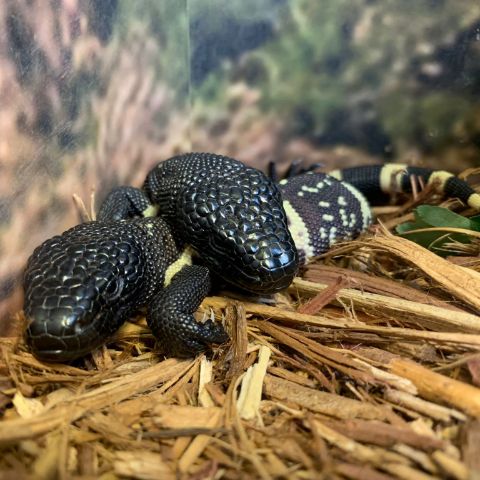Reverse the Red Day and the OKC Zoo
It’s Reverse the Red Day and the OKC Zoo is celebrating by highlighting the successful work of its conservation partner, the Foundation for the Conservation of Endangered Species of Guatemala (FUNDESGUA). Reverse the Red is a global movement that works to ensure the survival of species and ecosystems. The Zoo and FUNDESGUA are working to raise awareness for critically endangered species, such as the Guatemalan beaded lizard and the Campbell’s alligator lizard. The Zoo recently celebrated the first successful hatching of the Guatemalan beaded lizard in its history.
Project Update: Conserving the Guatemalan Beaded Lizard
The Guatemalan beaded lizard is one of the most endangered species in the world, found only in the Motagua Valley in eastern Guatemala. FUNDESGUA is working to protect habitat by creating a network of protected areas, building awareness among local people, and involving key stakeholders in land use decisions and habitat restoration. They have also established an in situ captive breeding program to support the wild population.
Community Awareness and Involvement
Awareness programs are conducted in local schools to forge conservation values in the next generation. Capacity building is provided to volunteers and workshops are organized with local landowners to jointly plan conservation actions. FUNDESGUA is leading the declaration of protected areas with local wildlife authorities.
Measuring Success
Success is demonstrated with the discovery and protection of a new population of Guatemalan beaded lizards, an increase in the number of hectares, farms, and land owners joining in habitat conservation management, and a change in attitude of people towards beaded lizards.
Future Plans
FUNDESGUA plans to expand its network of private protected areas, continue to raise awareness among the local population, and conduct research to provide detailed information regarding the use of habitat, behavior, and reproduction of Guatemalan beaded lizards.
Read the Source Here
Gaining Ground for Guatemalan Wildlife and Wild Places
Guatemala is home to a unique and diverse array of wildlife and wild places, but these habitats and species are under threat from a variety of human activities. In recent years, conservationists and local communities have come together to protect and restore these habitats and species, and their efforts are beginning to pay off.
A Rich Biodiversity
Guatemala is a small country in Central America, but it is home to a rich variety of wildlife and wild places. The country is home to over 7,000 species of plants, 1,200 species of birds, 400 species of mammals, and 300 species of reptiles. The country also has a wide variety of habitats, from tropical rainforests to grasslands, and from wetlands to high mountain peaks.
Threats to Wildlife and Wild Places
Unfortunately, Guatemala’s wildlife and wild places are under threat from a variety of human activities. These include deforestation, agricultural expansion, and illegal hunting and fishing. As a result, many species are at risk of extinction, and habitats are being lost or degraded.
Conservation Efforts
In recent years, conservationists and local communities have come together to protect and restore Guatemala’s wildlife and wild places. These efforts have included the creation of protected areas, such as national parks and wildlife reserves, as well as the implementation of sustainable agricultural practices. In addition, conservationists have worked with local communities to educate them about the importance of protecting the environment and to provide them with the tools and resources they need to do so.
Progress and Challenges
These efforts have begun to pay off, with some species showing signs of recovery and some habitats showing signs of improvement. However, there are still many challenges that need to be addressed. These include illegal hunting and fishing, as well as the destruction of habitats due to deforestation and agricultural expansion.
Looking Ahead
Despite the challenges, conservationists and local communities remain committed to protecting and restoring Guatemala’s wildlife and wild places. With continued support and collaboration, it is possible to make progress and ensure that future generations can enjoy the beauty and diversity of Guatemala’s wildlife and wild places.


